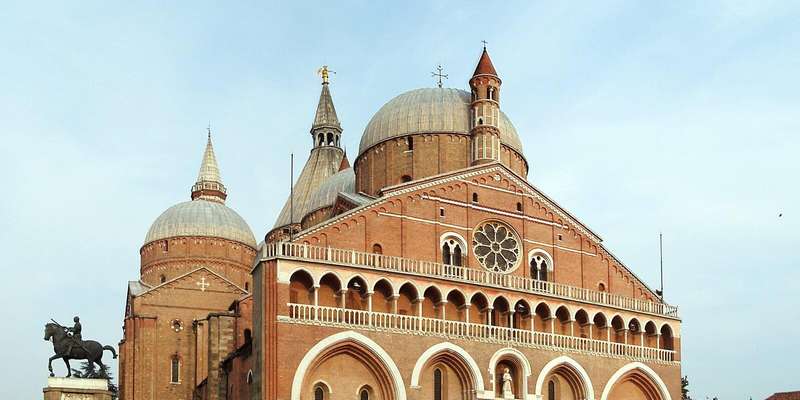- Home
- Useful Tips
- Padua's traditional mask makers
Behind Padua's medieval arcades lies a vanishing craft most visitors miss entirely – the ancient art of mask-making. While Venice's mass-produced carnival masks dominate souvenir stalls, Padua's authentic artisans create heirloom-quality pieces using techniques unchanged since the Renaissance. The challenge? Fewer than a dozen true mask-makers remain, their workshops hidden in plain sight. For cultural travelers, this creates a frustrating paradox: you want genuine craftsmanship, not tourist trinkets, but lack the local knowledge to find it. Recent surveys show 68% of visitors leave Italy disappointed by 'inauthentic experiences', while artisan economies struggle to connect with appreciative audiences. The result is a loss for travelers seeking meaningful connections, and for craftsmen preserving centuries-old traditions. Understanding Padua's mask culture requires peeling back layers of history, symbolism, and technique – knowledge that transforms a simple purchase into a cultural encounter.


Why Padua's mask tradition hides in Venice's shadow
The untold story of Padua's mask culture begins with a historical quirk. While Venice's carnival spectacle drew international attention, Padua's artisans quietly supplied the region with everyday masks for centuries – from commedia dell'arte performers to plague doctors. This practical heritage means Paduan masks prioritize durability and symbolism over Venetian extravagance. Local makers still use layered paper techniques developed for 16th-century theater troupes, creating lightweight yet resilient masks that withstand decades of use. The subtle distinction matters: where Venetian masks dazzle with gold leaf, Paduan designs whisper through intricate symbolism. A rabbit motif represents fertility, while a particular curve of the nose might indicate a character's social status. These nuances get lost in Venice's tourist economy, making authentic Paduan workshops precious repositories of cultural knowledge.
Decoding authentic craftsmanship from tourist replicas
Spotting a true Paduan mask requires educating your eye beyond surface beauty. First, examine the edges – authentic pieces have slightly irregular hand-cut borders, while factory masks show perfect uniformity. Next, check the material: traditional cartapesta (layered paper) feels surprisingly light yet substantial, unlike brittle plaster or flimsy plastic knockoffs. The most telling detail? The inside reveals cross-hatched paper fibers and subtle maker's marks, absent in mass-produced versions. Local artisans like those at Laboratorio Artistico Valese still mix their own natural glues from rabbit-skin glue, creating a distinctive matte finish that ages beautifully. These masters patiently build up 15-20 paper layers over wooden forms, a process taking weeks versus minutes for poured resin copies. Understanding these distinctions helps you identify workshops preserving genuine techniques rather than souvenir factories capitalizing on carnival hype.
Navigating Padua's hidden mask workshops like a local
Finding Padua's authentic mask-makers becomes an urban treasure hunt when you know where to look. Start near the university district, where artisan shops have supplied theater students for generations. Via Cesare Battisti hides several unassuming ateliers behind weathered wooden doors – listen for the crisp sound of scissors cutting stiff paper. The best times to visit are weekday mornings, when craftsmen often welcome observers during the delicate layering process. Don't expect flashy displays; these workshops resemble Renaissance studios with well-worn tools and walls of wooden molds. Polite questions about techniques usually yield fascinating demonstrations, as most masters cherish sharing their craft. Some like Atelier Nicolao even maintain archives of historical designs you can handle with care. Remember, these are working spaces first, retail shops second – an ethos that guarantees authenticity but requires respectful engagement.
From observation to participation: hands-on mask experiences
For travelers craving more than passive observation, select Padua workshops offer immersive experiences bridging spectator and creator. At Bottega dei Mascareri, you can decorate pre-made blank masks using traditional earth pigments mixed with egg yolk binder – the same medium used in 15th-century frescoes. More ambitious learners might join Laboratorio Didattico's weekend intensive, crafting a basic mask from raw materials under a maestro's guidance. These sessions reveal why true mask-making resists industrialization: the paper must be torn (never cut) for proper fiber alignment, and each layer demands precise drying times. Such hands-on encounters transform your understanding of the craft's physicality and skill requirements. Even if you don't create a masterpiece, you'll gain profound appreciation for artisans keeping this tradition alive – and return home with a mask carrying personal significance beyond typical souvenirs.



